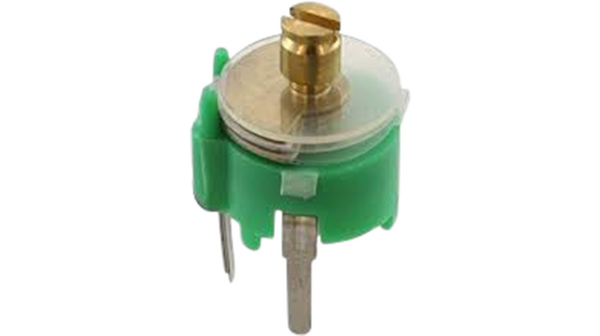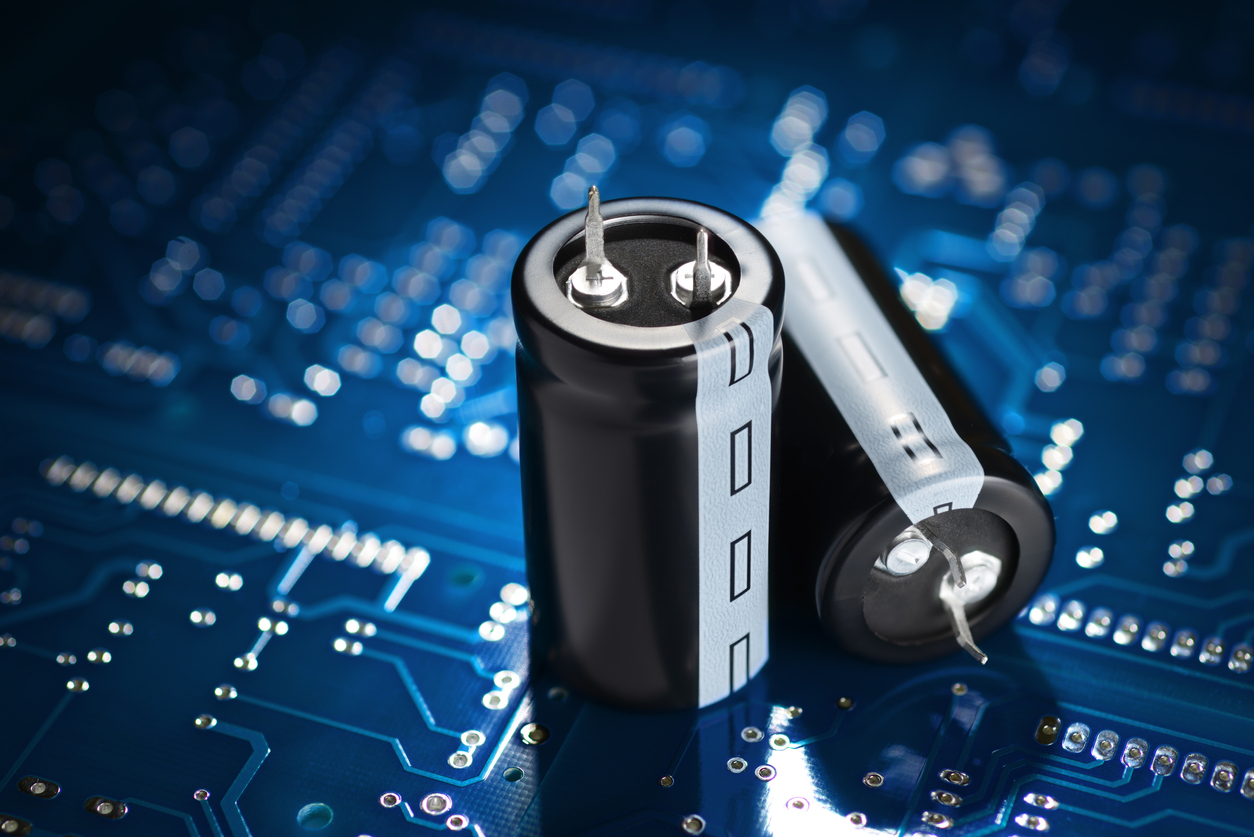The world of electronics relies on a range of passive components to work properly, and capacitors are one of those essential passive components.
Capacitors store and release electrical energy, which serves a variety of functions in circuits. Whether you’re a seasoned professional or an electronics enthusiast, understanding the basic functionalities, different types and variety of uses of capacitors is paramount. As technology advances and more and more electronic devices are launched, the demand for a multitude of capacitors grows, too. In fact, by 2028, the market for capacitors is projected to grow at a compound annual growth rate (CAGR) of 6.1%, reaching a valuation of $31.7 billion dollars.
This article delves into the world of capacitors, explaining what a capacitor consists of, the different types of capacitors and their uses, and also discusses the importance of choosing the right capacitor for your application. If you’re looking for somewhere to start, or just need your capacitor knowledge brushed up a touch, then you’re in the right place!
What is a Capacitor?
The basic function of a capacitor is to store energy in an electric field. Capacitors store energy and release it when necessary, in contrast to resistors, which limit the flow of current. A capacitor is made up of two conductive plates, which are separated by an insulating material called a dielectric. The plates are usually made out of materials like aluminium and copper, and the dielectric can be made out of materials like ceramic, plastic and paper. Capacitors can range in voltage, size and farads (F) of capacitance. However, the basic structure of a capacitor is a constant, which you can see below:
- Electrodes – these are the two conductive plates that store the energy.
- Dielectric – determines the capacitance and dielectric strength of the capacitor.
- Terminal leads – metal wires or pins which connect the capacitor to the circuit.
How Does a Capacitor Work?
When a capacitor is connected to a voltage source, like a power supply or battery, it causes a voltage difference between the plates, creating an electrical field. How does this happen?
Electrons in the conductor connected to the negative terminal of the voltage source are repelled and flow onto one of the conductive plates, giving it a negative charge. At the same time, electrons come from the positive terminal of the voltage source and through to the other conductive plate of the capacitor, giving this conductive plate a positive charge. The voltage difference generated creates an electric field between the two plates.
The dielectric is an insulator which means it plays a vital role in maintaining that electric field between the plates. It prevents direct electrical contact between the two plates, which allows for energy storage. The amount of energy that can be stored depends on the dielectric material used and its properties. When energy from the capacitor is required, it needs to be disconnected from the voltage source and a closed circuit needs to be made. When a charged capacitor is disconnected from its voltage source, the stored energy remains in the field and can provide energy to the connected circuit.
Types of Capacitor
Capacitors either have a fixed or variable capacitance – the variable ones can be tuned. They come in various different materials, shapes and sizes depending on the application they’re needed for. Take a look below at some of the most common types of capacitors.
Ceramic capacitors
There are a range of ceramic capacitors available on the market. A multilayer ceramic capacitor (MLCC) is one of the most popular and can be used in a variety of different applications, such as coupling and decoupling or filtering. Other types of ceramic capacitors include ceramic disk capacitors which are useful for high-frequency and high-voltage applications.
Electrolytic capacitors
Aluminium electrolytic capacitors are commonly used in applications where a large capacitance is desired. They’re often used to smooth out voltage ripple in power supply circuits and are also ideal for coupling and decoupling. Tantalum electrolytic capacitors are a type of electrolytic capacitor which is made from tantalum metal. These are perfect for circuits where precision and long-term performance are essential.
Film capacitors
Film capacitors use a very thin piece of plastic as the dielectric, which can be metallised or left as is, depending on the requirement of the capacitor. There are multiple types of film capacitors, including polyester film capacitors and polypropylene film capacitors. Polyester film capacitors are ideal for applications which require moderate precision, like timing circuits. Polypropylene film capacitors have great stability and low dielectric losses, making them the perfect option for high-performance applications, such as audio equipment.
Trimmer capacitors

Trimmer capacitors are adjustable components that are used for initial calibration of equipment and recalibration, if required. They’re used to set initial oscillator values, latencies and rise and fall times, but if these values drift, they can be recalibrated because they are variable.
Supercapacitors
For applications that need a large amount of energy storage, supercapacitors are ideal. This is because they have very high capacitance and quick energy release. Supercapacitors are particularly adept at starting motor engines and accumulating charge in regenerative braking systems.
Types of Applications for Capacitors
Capacitors are a useful component in many applications across a range of industries. Some of their most common uses are listed below:
- Energy storage – capacitors are a great tool for storing energy and are often used as a temporary battery. They can maintain power when a power supply is disconnected so no data is lost in electronic devices such as laptops and mobile phones.
- Coupling – capacitors block DC signals and allow AC signals to pass through, and as such they can be used to couple one section of a circuit with another. Often used in loudspeaker applications.
- Decoupling – capacitors can block out unwanted noise and voltage spikes, stabilising the voltage supply to integrated circuits.
- Sensors – capacitors react to changes in external factors, so they can also be used in sensing applications where they can measure any change in capacitance.
- Starting motors – capacitors can provide the initial boost needed for motor startup in electrical motors and improve their efficiency during operation.
- Power factor correction – capacitors can help improve energy efficiency in power factor correction devices.
- Timing and oscillation – capacitors are used to control the frequency of signals in timing circuits and oscillators.
How to Choose the Right Capacitor?
In order to choose a capacitor to fit the requirements of your circuit you must take into account several factors, including:
Capacitance (farads)
Calculate the necessary capacitance value based on the demands of your circuit. High-frequency applications call for smaller capacitance values, whereas energy storage and filtering applications benefit from larger capacitance values.
Voltage rating (volts)
Choose a capacitor with a voltage rating that is higher than the highest voltage your circuit would ever see. Using a capacitor with a voltage rating that is too low can result in failure and provide safety risks.
Dielectric material
Dielectric materials can have varying properties. Consider factors like temperature stability, the dielectric constant, and dielectric losses when selecting a dielectric that will work for your application.
Tolerance
A capacitor’s tolerance rating shows how closely its actual capacitance corresponds to the desired value. There are two common tolerances: +5% and +10%. Select a tolerance that is compatible with the demands of your circuit.
Size and package
Make sure the chosen capacitor’s physical dimensions fit into the design of your circuit. While through-hole capacitors are still employed in some applications, surface-mount capacitors are frequently used in current electronics.
Lifetime and reliability
In critical applications, consider the capacitor’s estimated lifetime and reliability. Some capacitors, such as electrolytic capacitors, have a limited lifespan.
As well as these considerations, there are other factors to bear in mind such as cost, environmental impact, temperature stability and equivalent series resistance (ESR).
Conclusion
Capacitors are adaptable electronic parts that are essential to many different circuits and applications. For successful electronics design and execution, it is crucial to comprehend the various types of capacitors that are available, their applications, and the considerations to take into account when picking the perfect capacitor for your project. Whether you’re coupling signals, tuning oscillators, or filtering power supplies, the capacitor you choose can have a huge impact on the efficiency and dependability of your circuits.











